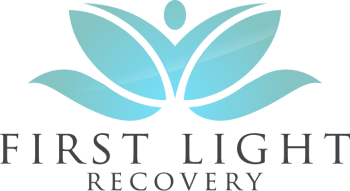Mental illness encompasses a wide and diverse range of conditions affecting mood, thoughts, personality, and behavior. To name a few are depression, anxiety, bipolar, attention-deficit/hyperactivity disorder, obsessive compulsive disorder, post-traumatic stress disorder, borderline personality disorder, schizophrenia, and schizoaffective. Mental illnesses have differing levels per individual of functioning and severity and are associated with distress and/or problems functioning socially, and emotionally and difficulties functioning in work and family activities.
Prevalence and Statistics
Nearly one in five U.S. adults experience some form of mental illness, that is 19%. One in 24 has a serious mental illness [4%], excluding developmental and substance use disorders. One in 12 has a substance use disorder [8.5%].
Symptoms, Causes, and Diagnosis
Mental health conditions differ from mental illness. Mental health conditions can affect daily activities of productivity, relationships, and adaptability to change and adversity.
Mental illness is diagnosable by the Diagnostic and Statistical Manual of Mental Disorders [DSM-5] and involves significant changes in thinking, emotions, and behavior that is accompanied by distress and/or problems functioning socially, occupationally, or in family activities.
There are varying factors that contribute to the onset of mental illness and mental health conditions and that can exacerbate symptoms. Some research points to genetic links in at least five disorders: autism, attention deficit hyperactivity disorder, bipolar disorder, major depression, and schizophrenia.
Although statistically significant data has been found the variations cannot be used to predict or diagnose specific conditions though may be used to aid in diagnosing and gain a better understanding of the present symptoms.
Stress, environment, unhealthy habits, brain chemistry, negative thoughts, substance abuse, and trauma can also trigger a mental illness onset.
Treatment and Levels of Care
Mental illness is treatable. It is considered a medical condition such as heart disease or diabetes. Often, individuals can manage symptoms with various levels of treatment and intervention. Such as:
- Psychotherapy
- Psychotropic medications
- Lifestyle changes
- Self-management strategies and education
There are different levels of care offered at treatment facilities for varying medical necessity. These levels of care are often covered by most insurance companies. Listed from most intense to least intense levels:
- Inpatient Hospitalization – this is the highest level of containment. Inpatient hospitalization may be done at a voluntary or involuntary basis and is for individuals who are in imminent danger to themselves or others, presenting a significant risk. The focus of treatment at this level is short-term stabilization and safety.
- Residential (RTC) – This program provides 24/7 monitoring in which the individual lives on site. This level of care is for individuals who are significantly impacted by their symptoms and display adaptive living skill deficits preventing them from accessing treatment from their home.
- Partial Hospitalization Program (PHP) or “Day Treatment” – This program provides care five days a week for six to eight hours per day. This level includes group and individual sessions with psychiatric care. Participation in the program does not include housing though some facilities may provide supportive housing with an out-of-pocket cost if needed.
- Intensive Outpatient Program (IOP) – IOP can be provided at three or five days a week for at least three hours a day. The program will focus on group sessions for the individual to gain skills to manage their symptoms. This level of care may include individual therapy and psychiatry for medication management.
- Outpatient (OP) – At this level, individuals are engaging in psychiatry and therapy and few times per month or once a week depending on their presentation and symptoms.
Encourage your loved one to speak to professionals to gain a higher understanding and education on the levels of care and what appropriate facilitates would meet their personal needs, symptoms and/or diagnosis.
Communication

It often begins with healthy boundaries. A boundary is defined by a line that marks the limits of an area, a limit or extent.
When boundaries are crossed, it can lead to communication breakdowns, discomfort and even anger. Healthy boundaries include valuing your own opinion, not compromising your values for others, sharing personal information in an appropriate way (avoiding under sharing and oversharing), knowing personal wants and needs and being able to communicate them clearly, accepting when others say “no.”
Unhealthy boundaries can be either rigid or porous. Individuals with rigid boundaries often avoid intimacy and close relationships, unlikely to ask for help, has few relationships, is protective, detached, keeps others at a distance.
Porous boundaries describe an individual that over shares, has difficulties saying no, is overinvolved with others’ problems, dependent on others’ opinions, accepts abuse and/or disrespect, and fears rejection.
Communication tips to avoid unhealthy boundaries and co-dependence:
- Use “I” statements – “I feel…” to own your own opinion and feelings
- Speak for yourself and not for others
- Repeat everything you think you heard the other person say so to check that you fully understand the situation
- Never raise your voice
- Never fight in public
- Determine the direction of hostility by asking yourself “Who is this person really angry with?”
- Stay away from extreme statements like “never” and “always”
- Focus on your responsibilities versus the other person’s.
- It’s ok to agree to disagree
- Consider what past experiences are affecting your present relationship
- Share your feelings before giving your opinions
Remember the goal of good communication is to deepen your understanding. The real enemy of communication is silence.
Coping Skills for Family Members
- Remember feelings are temporary and will pass
- Engage in self-care
- Educate yourself
- Get active
- Build a sense of community and support – join a support group
- Engage in psychotherapy with a therapist




